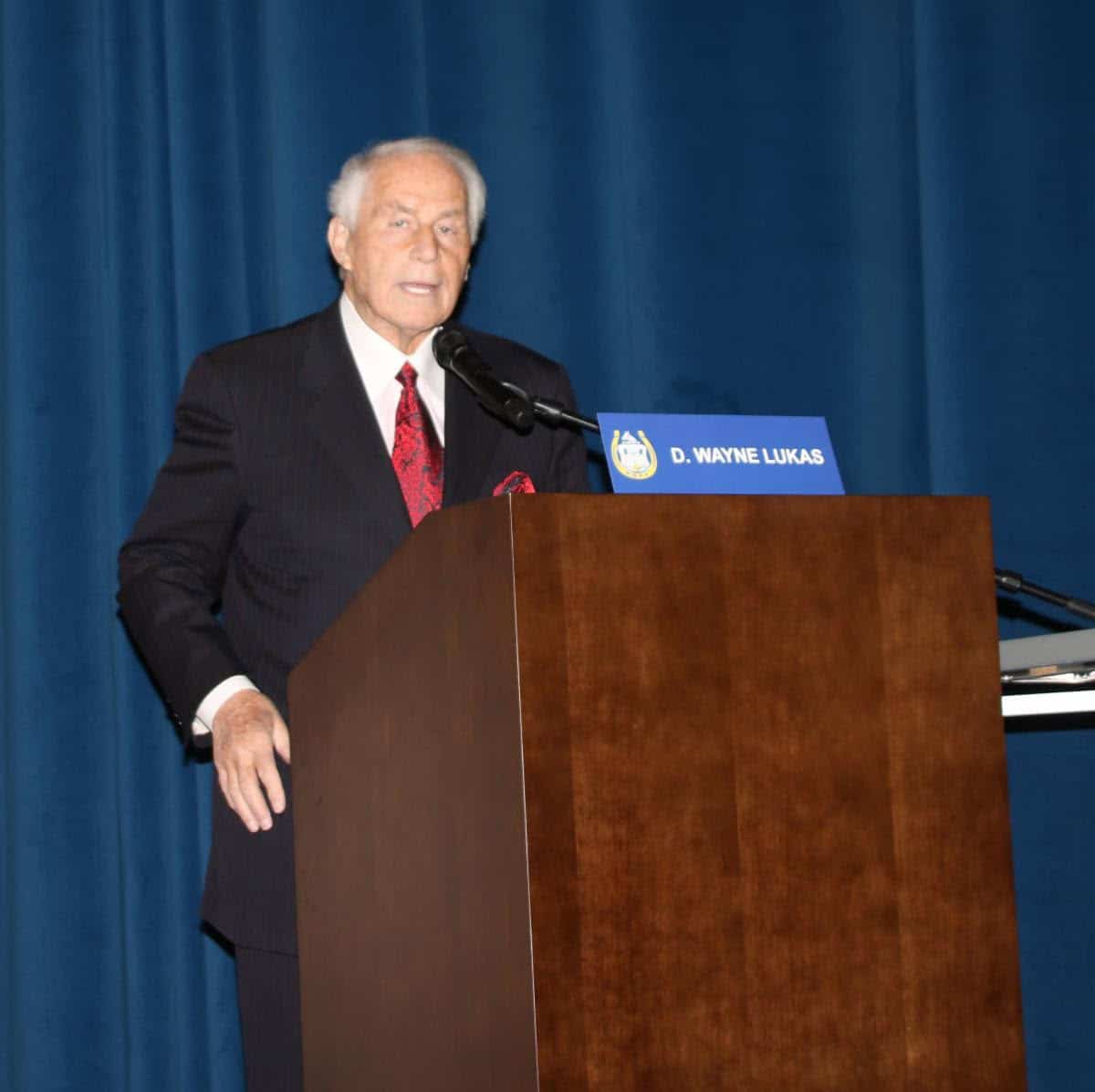USADA Oversight Gets Push at Round Table
Blood-Horse
State-by-state efforts to bring about uniformity in medication policies, drug testing, and enforcement aren’t sufficient to move the Thoroughbred industry forward as it struggles to improve its brand, speakers said Aug. 9 at The Jockey Club Round Table conference.
Medication issues dominated the second half of the two-hour conference held in Saratoga Springs, N.Y. The talks came amid the backdrop of recently introduced federal legislation that would grant the United States Anti-Doping Agency oversight of equine drug policy and testing.
Kentucky Gov. Steve Beshear outlined the progress made by the Kentucky Horse Racing Commission in regard to equine medication and drug testing. The state has adopted most of the policies that are part of the National Medication Uniform Program.
“Kentucky endorses and embraces the need for broad-based reform that includes not only uniform medication rules, but also common testing rules and procedures, the required use of certified labs, consistent enforcement and penalties, creation of a national medication regulatory authority, and a system that responds quickly to address ever-changing trends in the drug landscape,” said Beshear, who is in the final year of his eight years as governor. “Our collective experiences over the last several decades have demonstrated that individual state racing commissions cannot get this job done.”
Not all stakeholder groups in Kentucky are on board. The Kentucky Thoroughbred Association, one of two horsemen’s groups in the state, endorses federal legislation as a member of the Coalition of Horse Racing Integrity. The Kentucky Horsemen’s Benevolent and Protection Association does not support the bill.
The state’s racetracks support uniformity but haven’t individually spoken in favor of the federal approach. All of them are members of the Thoroughbred Racing Associations, which a day before the Round Table said it would work to ensure all racing jurisdictions adopt the National Uniform Medication Program.
USADA chairman Edwin Moses, perhaps addressing skepticism of the organization’s tie to federal legislation, made it a point to say USADA is an independent group and not a government agency. The federal bill would create the Thoroughbred Horseracing Anti-Doping Authority, which in turn would hire USADA.
“Horse racing has an opportunity to take a new path and to make a serious change to protect the future of the sport, and we have been asked to help,” Moses said. “I don’t have to tell you that in the sport of horse racing, which is built on the integrity of competition, nothing is more important than a clean and level playing field, not just for the fans and bettors, but most importantly for the health and safety of the horses and jockeys whose lives depend upon it.
“What we have heard from those in the horseracing industry is that the current regulatory framework has created a situation where anti-doping rules drastically vary from state to state, with a wide disparity in the effectiveness of testing and enforcement.”
Moses, drawing upon his experience as an Olympic competitor, said different rules in various countries created issues similar to state-by-state regulation of equine medication.
“You could not have a system where the fox was guarding the hen house, and the rules were arbitrary and unequally implemented,” he said.
Jim Gagliano, president and chief operating officer of The Jockey Club, said it’s time for the racing industry to “reconcile its differences,” so it can move forward with a consensus. He said if the federal bill passed, racing regulators wouldn’t have to concern themselves with drug testing and penalties. Horsemen wouldn’t have to worry about different rules from state to state, and racetracks and horseplayers could be assured of a level playing field.
“We believe this particular piece of legislation would once and for all bring much-needed uniformity to the sport,” Gagliano said.
The Thoroughbred Horseracing Integrity Act of 2015 was sponsored in the House of Representatives by Reps. Andy Barr, a Kentucky Republican, and Paul Tonko, a New York Democrat. Gagliano at the Round Table announced that Sen. Kirsten Gillibrand, a New York Democrat, had agreed to sponsor the bill in the U.S. Senate.
Gagliano also said Frank Stronach, chairman of The Stronach Group, which operates major United States racetracks, met with Moses and has “embraced” the federal legislation concept but has questions about the proposed governing body.
Alex Waldrop, president and chief executive officer of the National Thoroughbred Racing Association, said after the Round Table the organization has diverse viewpoints and at this point hasn’t taken a position on federal legislation.
“That doesn’t mean we support the status quo,” Waldrop said. “We’re not ignorant of the issues, but at this point in time, our focus is on (adoption) of the National Uniform Medication Program.”
The Aug. 8 TRA release, which didn’t mention the federal bill, said the organization would step up efforts to facilitate state-by-state adoption of the national program. TRA executive vice president Chris Scherf, who attended the Round Table, said racing associations will be urged to do so.
“We’ll be keeping after the tracks and we’ll constantly be updating the scorecard,” Scherf said. “We also just met with Dr. Kathleen Anderson of the (American Association of Equine Practitioners) and discussed how racetracks can assist with (implementing the AAEP plan for reforms).”
Anderson, who spoke at the Round Table, outlined a 10-point plan a week before the conference. The group of veterinarians endorses a 48-hour pre-race cutoff for administration of non-steroidal anti-inflammatory drugs, and this fall will begin research alternatives to race-day furosemide, the anti-bleeding medication also known as Lasix or Salix.
“When we are successful in finding an alternative of equal or greater efficacy to Lasix that does not require race-day administration, we will propose that national uniform medication policy be amended to eliminate race-day medication,” Anderson said. “The AAEP stands behind the effectiveness of Lasix as a race-day treatment, but we are committed to identifying viable alternatives that would negate the need for race-day administration.”





